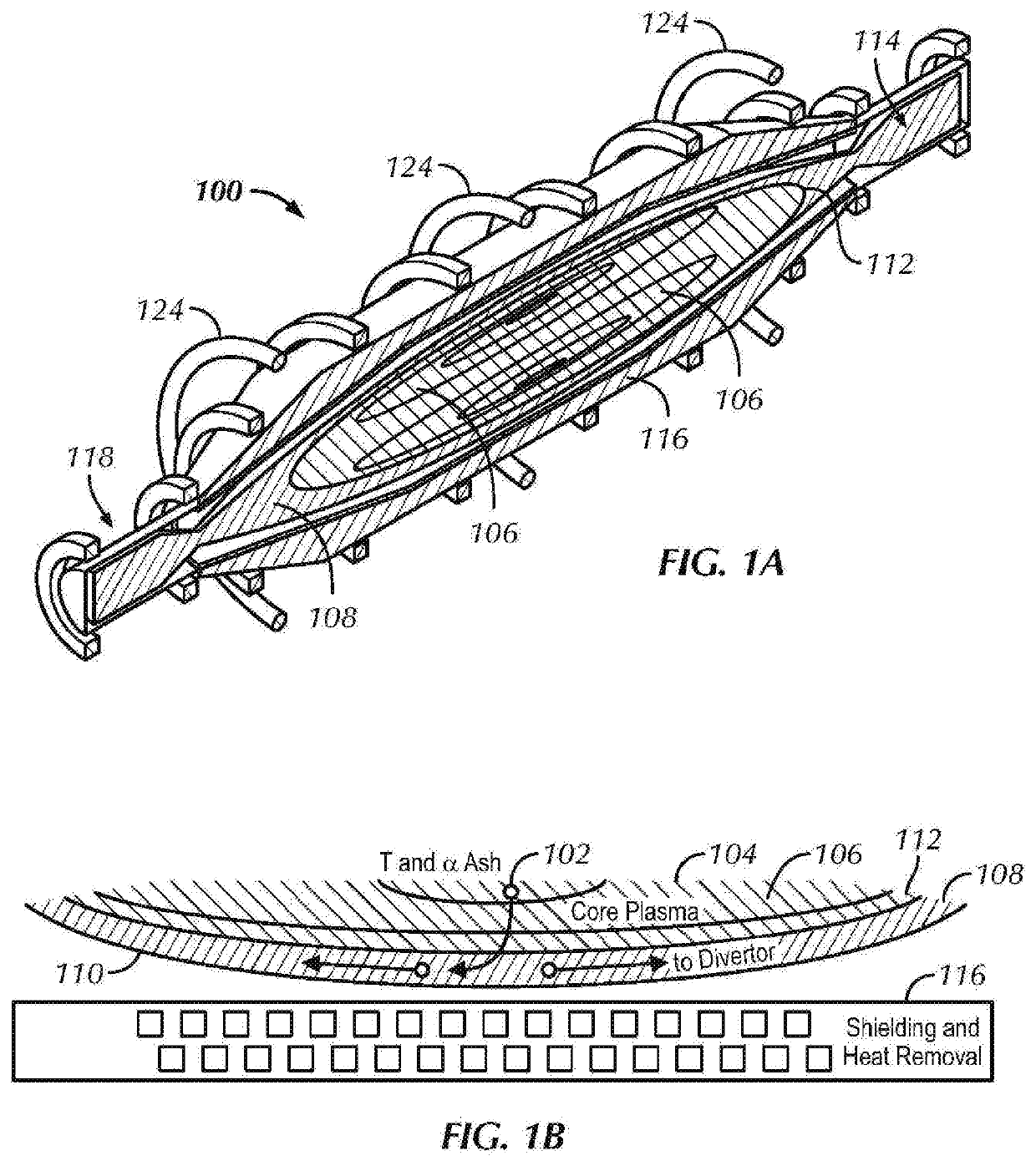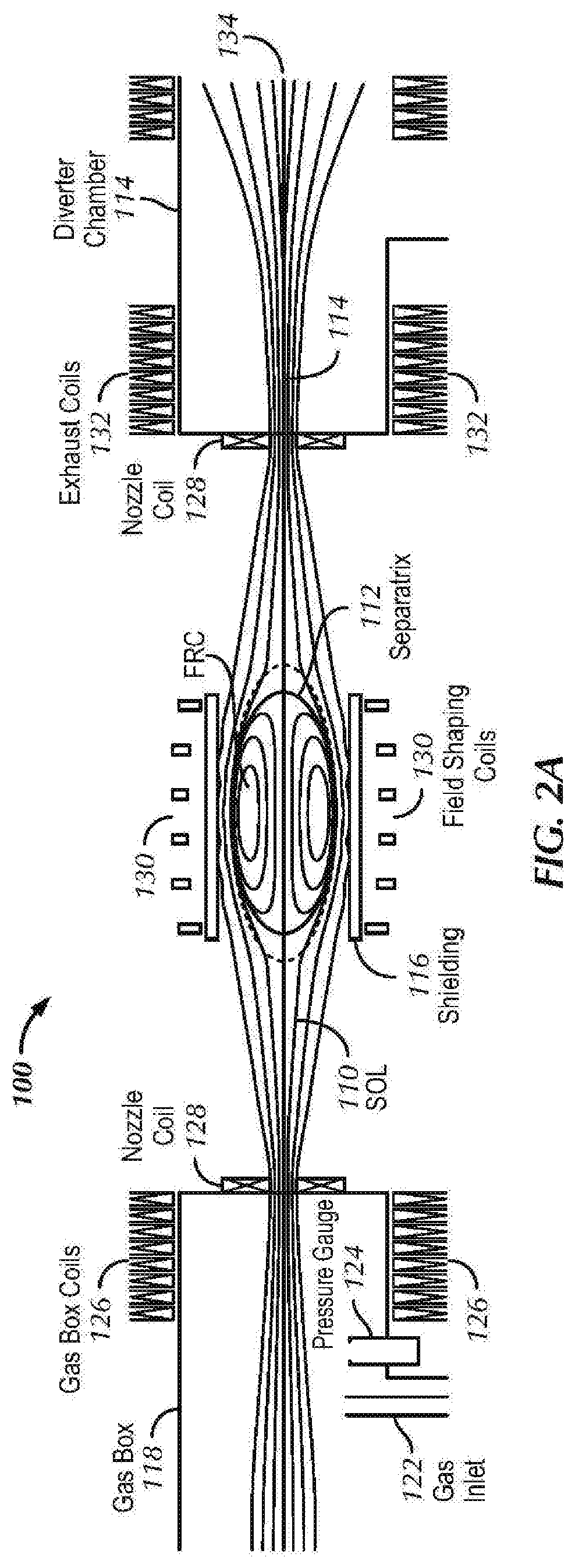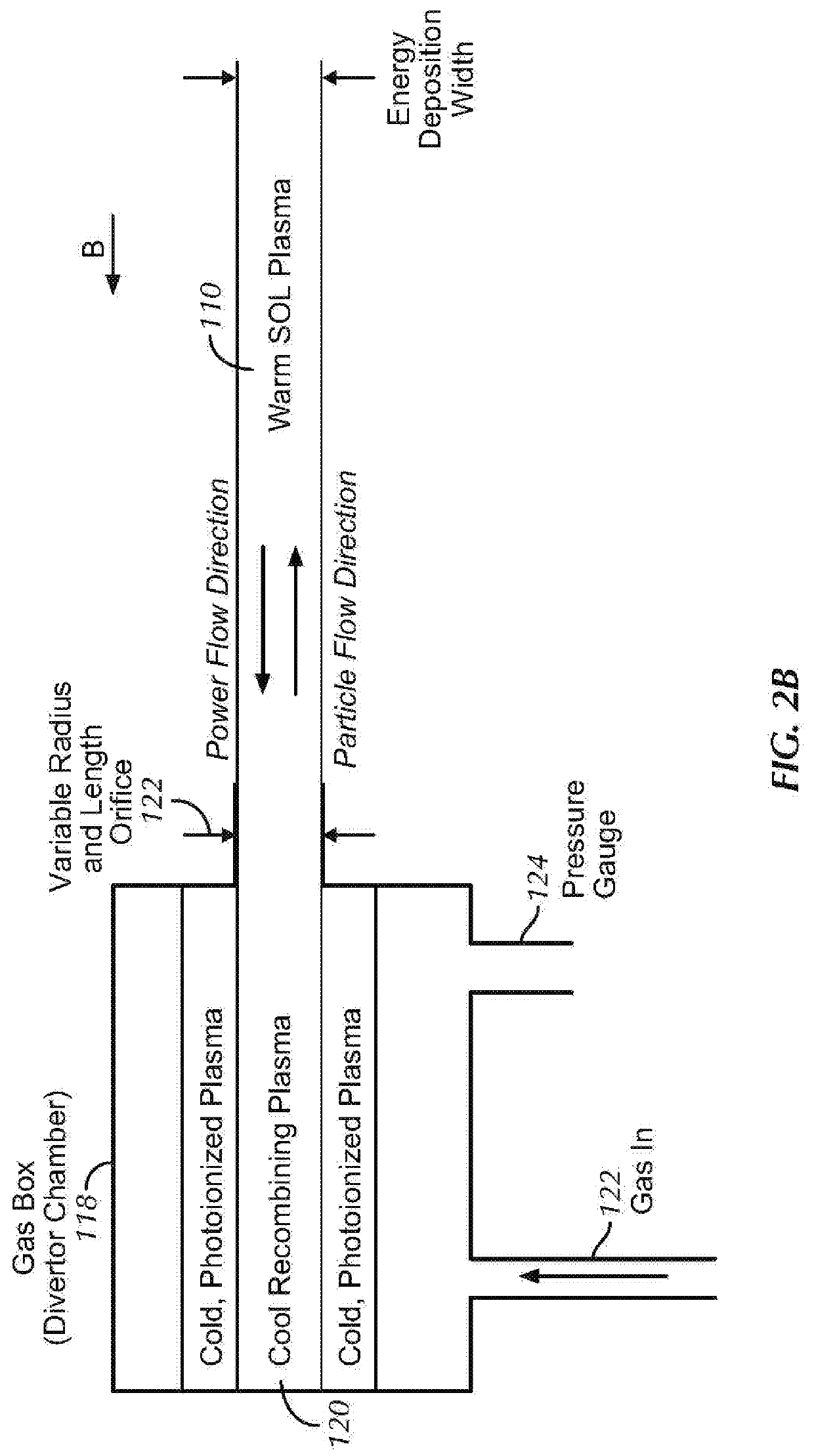System and method for small, clean, steady-state fusion reactors
a steady-state fusion reactor and reactor technology, applied in nuclear reactors, greenhouse gas reduction, machines/engines, etc., can solve the problems of inability to provide the density of local solar and wind power, inability to produce plasma pressures, and small pulse lengths, so as to reduce neutron emissions, reduce speed, and achieve high steady-state fusion power
- Summary
- Abstract
- Description
- Claims
- Application Information
AI Technical Summary
Benefits of technology
Problems solved by technology
Method used
Image
Examples
Embodiment Construction
[0029]Disclosed herein is a FRC plasma device designed to reduce technical and financial risks. An object of the present invention is to make practical, safe, small reactors suitable for a distributed power grid and in population centers. Radioactivity is kept at negligible levels, accomplished in part by the choice of fuel. Embodiments of the present invention produce either hydrogen (H) plasmas, D-3He, or D-D plasmas or combinations of these. Even under the most extreme conditions, H barely fuses, leading to virtually no radioactivity, but no fusion power. The fusion of D-3He can be controlled to produce less than 1 / 1000th the neutron wall load, measured in MW / m2, of a fission reactor or D-T tokamak reactor per unit of power, as described below. However, the main drawback with D-3He is the scarcity of 3He. Nonetheless, embodiments of the present invention, which discloses the use of a pair of small FRC reactors, one to provide 3He fuel for the second, may apply the system and meth...
PUM
 Login to View More
Login to View More Abstract
Description
Claims
Application Information
 Login to View More
Login to View More - R&D
- Intellectual Property
- Life Sciences
- Materials
- Tech Scout
- Unparalleled Data Quality
- Higher Quality Content
- 60% Fewer Hallucinations
Browse by: Latest US Patents, China's latest patents, Technical Efficacy Thesaurus, Application Domain, Technology Topic, Popular Technical Reports.
© 2025 PatSnap. All rights reserved.Legal|Privacy policy|Modern Slavery Act Transparency Statement|Sitemap|About US| Contact US: help@patsnap.com



